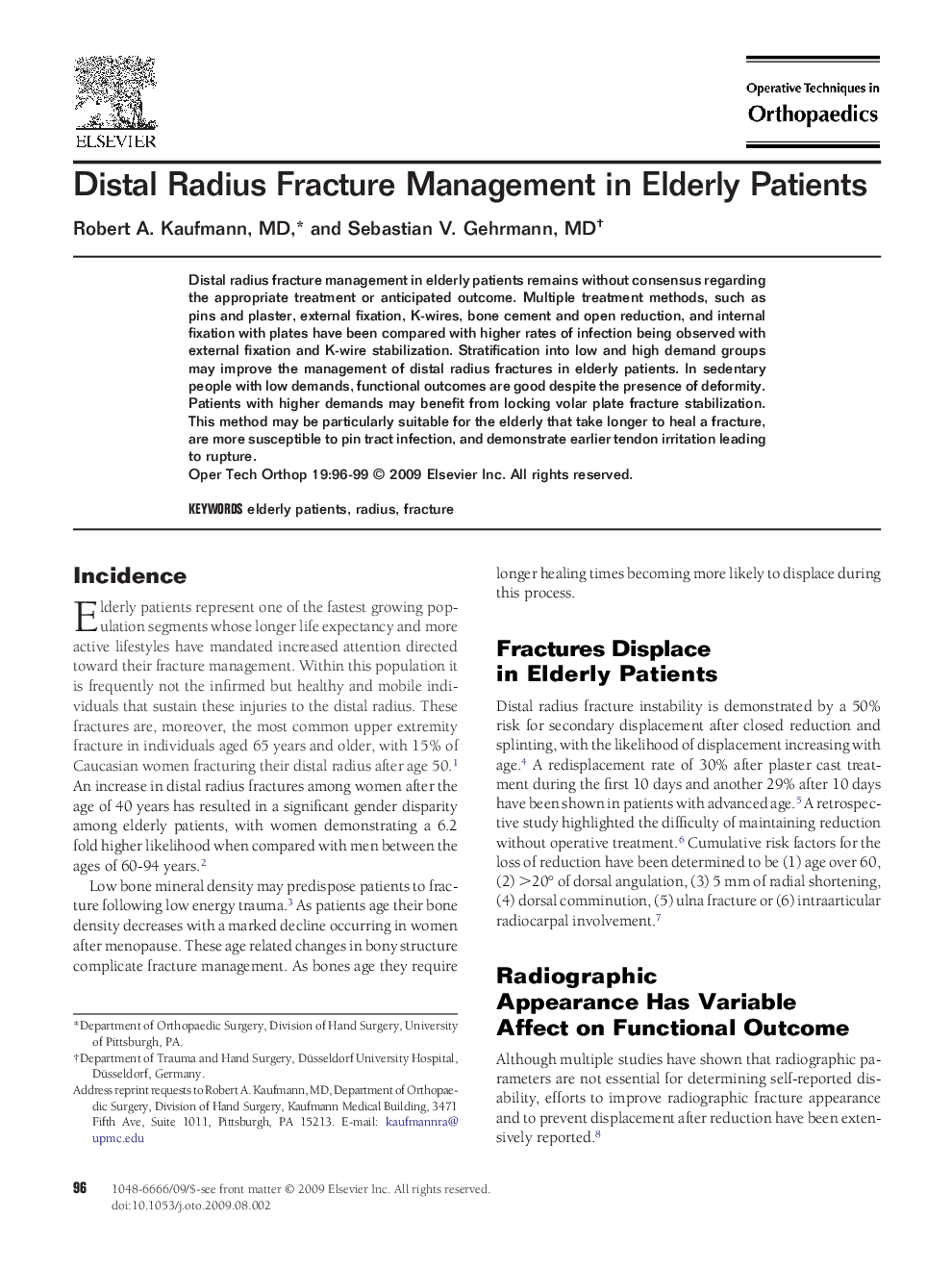| Article ID | Journal | Published Year | Pages | File Type |
|---|---|---|---|---|
| 4079195 | Operative Techniques in Orthopaedics | 2009 | 4 Pages |
Distal radius fracture management in elderly patients remains without consensus regarding the appropriate treatment or anticipated outcome. Multiple treatment methods, such as pins and plaster, external fixation, K-wires, bone cement and open reduction, and internal fixation with plates have been compared with higher rates of infection being observed with external fixation and K-wire stabilization. Stratification into low and high demand groups may improve the management of distal radius fractures in elderly patients. In sedentary people with low demands, functional outcomes are good despite the presence of deformity. Patients with higher demands may benefit from locking volar plate fracture stabilization. This method may be particularly suitable for the elderly that take longer to heal a fracture, are more susceptible to pin tract infection, and demonstrate earlier tendon irritation leading to rupture.
